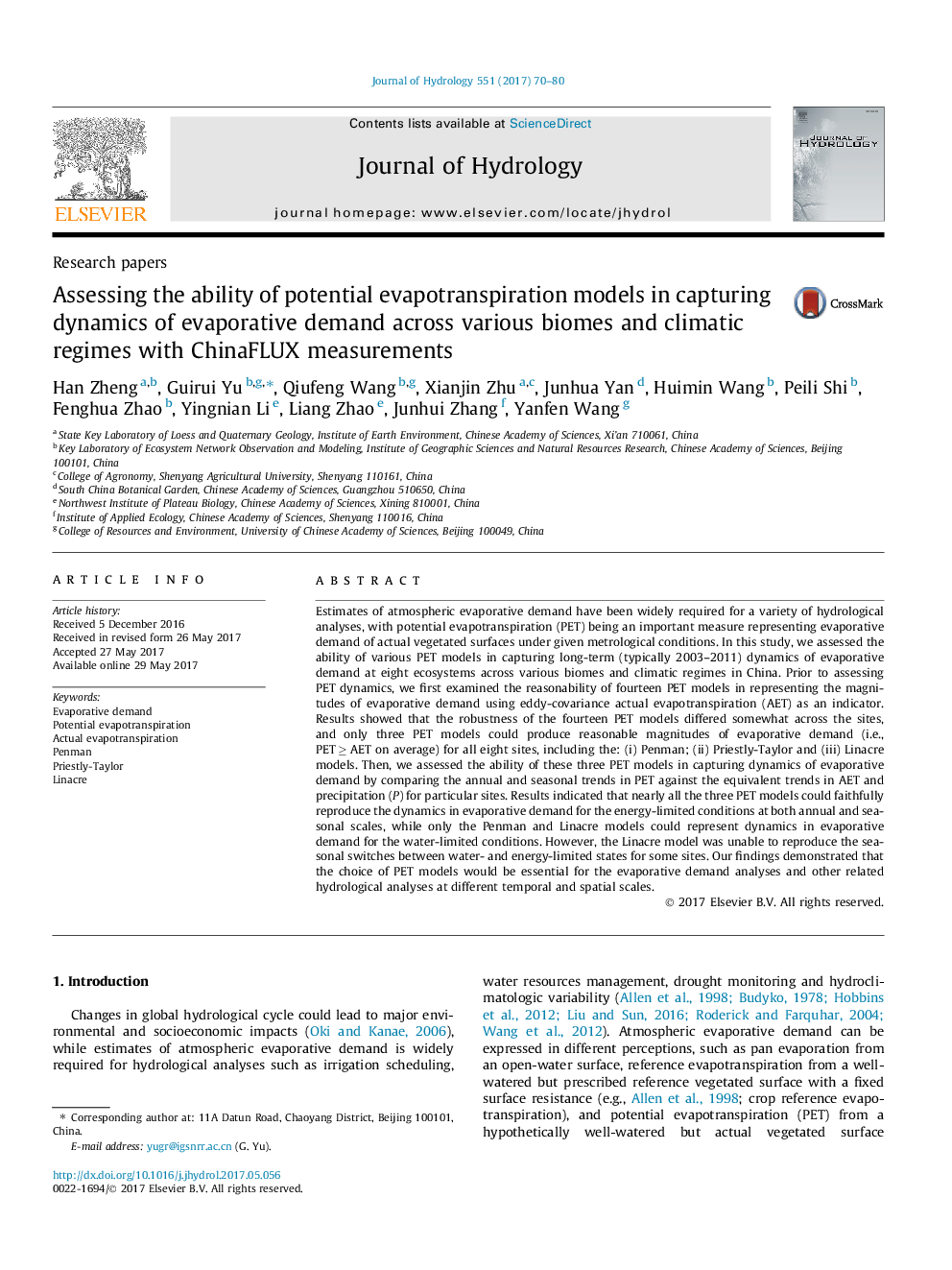| کد مقاله | کد نشریه | سال انتشار | مقاله انگلیسی | نسخه تمام متن |
|---|---|---|---|---|
| 5770886 | 1629903 | 2017 | 11 صفحه PDF | دانلود رایگان |

- 3 of 14 PET models could represent the magnitudes of evaporative demand.
- Priestly-Taylor model was best suited for energy-limited conditions.
- Linacre model may fail to capture seasonal switch between water- and energy-limited states.
- Penman equation works best across the range of conditions tested.
Estimates of atmospheric evaporative demand have been widely required for a variety of hydrological analyses, with potential evapotranspiration (PET) being an important measure representing evaporative demand of actual vegetated surfaces under given metrological conditions. In this study, we assessed the ability of various PET models in capturing long-term (typically 2003-2011) dynamics of evaporative demand at eight ecosystems across various biomes and climatic regimes in China. Prior to assessing PET dynamics, we first examined the reasonability of fourteen PET models in representing the magnitudes of evaporative demand using eddy-covariance actual evapotranspiration (AET) as an indicator. Results showed that the robustness of the fourteen PET models differed somewhat across the sites, and only three PET models could produce reasonable magnitudes of evaporative demand (i.e., PET â¥Â AET on average) for all eight sites, including the: (i) Penman; (ii) Priestly-Taylor and (iii) Linacre models. Then, we assessed the ability of these three PET models in capturing dynamics of evaporative demand by comparing the annual and seasonal trends in PET against the equivalent trends in AET and precipitation (P) for particular sites. Results indicated that nearly all the three PET models could faithfully reproduce the dynamics in evaporative demand for the energy-limited conditions at both annual and seasonal scales, while only the Penman and Linacre models could represent dynamics in evaporative demand for the water-limited conditions. However, the Linacre model was unable to reproduce the seasonal switches between water- and energy-limited states for some sites. Our findings demonstrated that the choice of PET models would be essential for the evaporative demand analyses and other related hydrological analyses at different temporal and spatial scales.
Journal: Journal of Hydrology - Volume 551, August 2017, Pages 70-80